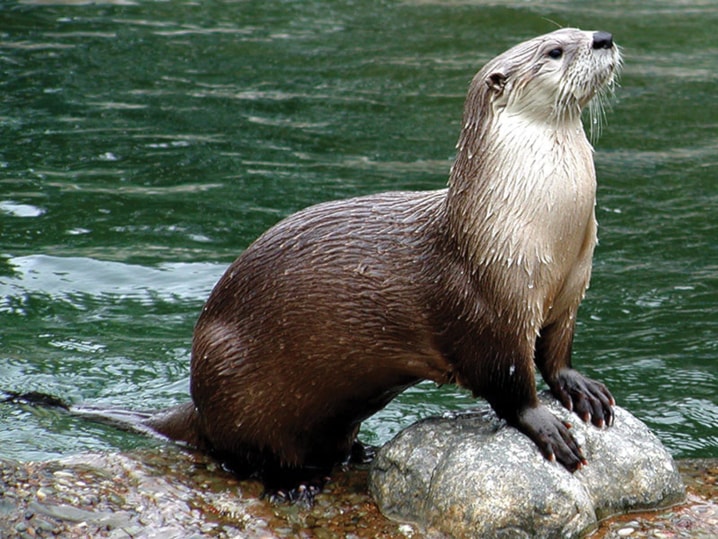A local environmental group is concerned about the river otter population in the West Country and what it means for the fish that call the same small bodies of water home.
More and more river otters, big fish consumers, have been spotted in local rivers and lakes, says Friends of the Red Deer River Society, a grassroots watchdog group for watersheds around Central Alberta.
Alberta Fish and Wildlife introduced river otters, members of the weasel family, to the Clearwater division, specifically in the Eastern Slope streams, in the 1990s and continued to do so up until a few years ago, states the society.
This “short-sighted” act, said the society, is putting even more pressure on the small fisheries, especially trout, which are already vulnerable from poor water quality and illegal retention rates by anglers.
Friends of the Red Deer River obtained freedom of information papers that show Fish and Wildlife transported otters largely from the Vermilion area to West Country lakes and streams in 1992, 1996 and again in 1999.
“This has turned into a big problem in what was already a volatile situation,” said Patrick Williams, a founding member of the society who has been fly fishing for more than 25 years.
“You have adult otters on small streams and the fish have nowhere to go but into the otters,” he said. “There is no natural predator present to control the otters so they’re prolific and they have been reproducing and spreading across the West Country.”
They’d like to see the otters trapped and their numbers reduced, said Williams.
Jim Allen, the head of game and priority species for Alberta’s Fish and Wildlife under the Department of Environment and Sustainable Resource Development, said they’re aware of the concerns in regards to the otters.
“We have been receiving an increased number of calls in regards to otters,” he said. “However, we’re finding the otter populations are not just increasing in the West Country but in many other areas as well.”
There have been no relocations of otters to the area by Fish and Wildlife since the late 1990s when four or so otters were released after being captured in a trapping program elsewhere, said Allen, who worked as a biologist for many years out of Rocky Mountain House.
“They needed to be relocated to a habitat that would support them. . . . Our job is to build and maintain species that are depleting and the otters are very important to biodiversity in the area,” said Allen. “There have always been otters in the West Country; people are just noticing them now because there are more of them.”
Allen said he thinks there are more otters also because there is less trapping going on overall.
There is no designated trapping season in the West Country for otters as of yet, noted Allen.
“Our No. 1 priority is conservation and then we look at allocation,” he said. “We’re monitoring the situation and if at some point, we feel there needs to be a harvest and that the otter population could sustain a harvest, we might implement such a season. . . . Some trappers have been asking about that possibility.”
No data has been collected about the otter population in the West Country region, said Carrie Nugent, a wildlife biologist with the Rocky Mountain House Fish and Wildlife office.
“We plan to officially launch a two-year study in September to look into the otter situation around the West Country,” said Nugent, who will be heading the study.
The study will particularly focus on Prairie Creek, said Nugent, where Fish and Wildlife are receiving the most complaints from anglers.
“We’ve done some preliminary research, looking at otter patterns and the habitats they live in around the area,” said Nugent.
Otters prefer slow-moving fish, the non-sporting fish, she added.
“It’s been often thought that the larger, full-grown trout in the summers are too agile for otters. . . . We want to study this and see if otters are having an impact on trout over the winter, in spawning season, stuff like that.”
While there has been a significant increase in the number of otter spottings, Nugent said she wouldn’t call the situation a case of population explosion.
“It’s still not an overly common complaint . . . we’re not getting weekly calls about them.”
The study will look into the diets of the otters and if they could be causing a decline in West Country fish, she said.
But for Williams, Prairie Creek used to be a “pretty good, self-sustaining trout fishery.”
That has changed and he thinks it’s in part due to adult otters.
Anyone who sees an otter can report it to Nugent by phoning 403-845-8303 or by email at carrie.nugent@gov.ab.ca.
For more information or to contact Friends of the Red Deer River, visit www.albertafishinginsights.com.
rfrancoeur@www.reddeeradvocate.com
